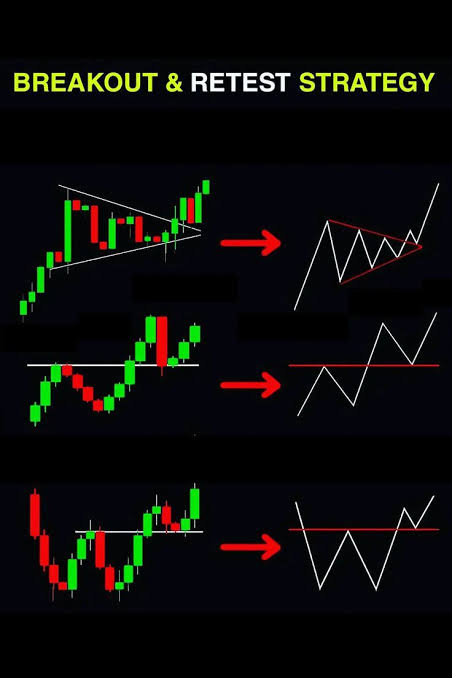#NSE0005– How the Breakout and Retest Strategy Works
- Identify Key Levels: The first step is to identify significant levels of support and resistance. These levels can be identified through historical price highs and lows, trend lines.
- Watch for a Breakout: A breakout occurs when the price moves beyond a defined resistance or support level with increased volume. A genuine breakout should be accompanied by higher than average trading volume, which provides confirmation that there is strong market interest in moving past these levels.
- Wait for the Retest: After a breakout, prices often pull back to the breakout level, now acting as the new support in the case of an upward breakout or new resistance if the breakout was downward. This retest is crucial as it can confirm the validity of the breakout. Lower volume on the retest compared to the breakout volume is typical and often considered a validation of the retest.
- Enter the Trade: If the retest holds — meaning the price does not fall back below the new support in an upward breakout or rise above the new resistance in a downward breakout — it can be a good opportunity to enter a trade. Traders typically look for additional signals such as candlestick patterns, RSI levels, or MACD indicators to confirm entry.
- Set Stop-Losses: To manage risk effectively, set a stop-loss just below the new support level for an upward breakout or above the new resistance level for a downward breakout. This protects against the risk that the breakout fails after the retest.
- Monitor and Manage the Trade: Keep an eye on the stock’s performance following the entry. Consider setting take-profit levels or adjusting the stop-loss order to lock in profits as the stock moves favorably.

Considerations
- Confirmation: Always seek confirmation through volume or additional indicators. False breakouts are common and can result in losses.
- Market Conditions: Be aware of broader market conditions that might affect stock performance. Breakouts are more reliable in a bullish market environment.
- Patience and Discipline: The breakout and retest strategy requires patience to wait for the right conditions and discipline to stick to pre-defined entry and exit rules.
Disclaimer-
It’s important to note that discussions like are for informational purposes only and should not be taken as specific We are not SEBI registered investment advisor. Whether analyzing a company’s financial health, examining market trends, or discussing technical chart patterns, the goal is to provide insights and perspectives that can help you make more informed decisions according to your own research and investment strategy. Always consider consulting with a financial advisor or conducting thorough personal research before making any investment decisions.





